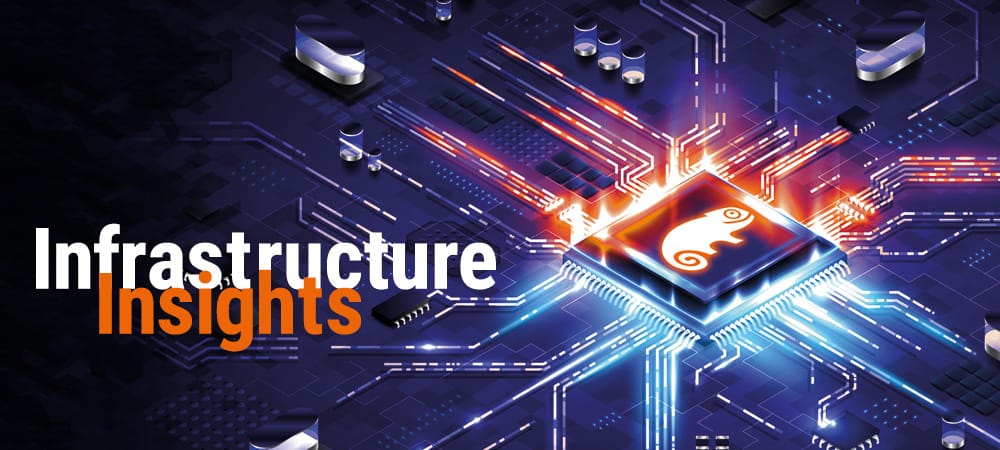ERP Workload Automation With Redwood


As Redwood Software’s SVP of Business Development and Strategy, Devin Gharibian-Saki brings a wealth of knowledge and expertise on enterprise IT, the SAP ecosystem, and business process automation. Experience with product marketing, product management, and enterprise software sales enables Devin to drive strategic initiatives and alliances for organizations and unlock new business models and go-to-market strategies.
Prior to working for Redwood, Devin was an SAP Technology Consultant, working directly at SAP and at EnBW, the 3rd latest utility in Germany. Devin holds a diploma in Mathematics from the Karlsruhe Institute of Technology in Karlsruhe, Germany, as well as two patents.

Devin Gharibian-Saki,
SVP Business Development and Strategy, Redwood
1. Many SAP legacy customers are centralizing their ERP systems. Do these customers still need workload automation? If so, in which areas?
In short, the answer is yes. Customers are not only centralizing their ERP systems, they are also modernizing them by moving from on-premises ERP to cloud ERP. Some of these are private clouds, others are public clouds.
Even with ERP alone, there is inherent complexity when it comes to managing the dependencies between different business transactions involving end-to-end processes such as order to cash, production planning, procure to pay, etc. As customers move to modern ERPs and hybrid clouds, we also see that their end-to-end processes span multiple technologies and platforms in addition to the core ERP. Workload Automation is the critical automation layer on top of these applications, ensuring the seamless execution and operation of critical background processes in ERP and beyond.
2. ERP has always been complex. Users must come to terms with that, isn't that right?
Since the early days of IT, complexity has only grown, and it will continue to grow. The only way to manage that complexity is automation, and we’re a big part of that with our technology. RunMyJobs is a SaaS-based full stack workload automation built for hybrid cloud. The platform can manage end-to-end processes with high availability, security and performance that remain consistent as you scale.
3. Why are orchestration and workload automation necessary? Why do the programs that accomplish similar functions in an operating system, or ones that are built into the ERP system, not suffice?
You’re right that every single technology and system has its own built-in capability to schedule processes and transactions—that’s correct. Operating systems have that capability, ERP systems have that capability, any other system has some basic capability. Now, the challenge is none of these individual capabilities have been built to provide end-to-end orchestration, working across multiple applications. That's the piece that’s ultimately needed most these days, where the landscape is becoming more complex.
4. End-to-end thus stands alongside complexity. What else do users want?
At the same time, customer expectations are becoming more and more rigorous and more demanding. Think of how customers buy things online today versus in the past. Twenty years ago, a customer would get a confirmation email a day after they ordered something. If you were to do that today, your customer would think their transaction didn’t go through, or maybe even the company’s services are not legitimate. Internal contacts have the same expectations. If you have vital HR processes or services for employees or financial closings, you can’t afford to have disjointed or outdated automation capabilities handling these things; it creates a bad experience and often causes delays or standstills.
These siloed capabilities are by no means sufficient to fulfill the complex requirements and more rigorous demands of today’s customers, and the experiences they want to have when engaging with the platform.
5. What are the advantages of an autonomous workload automation system?
One of them I briefly touched on is ultimately delivering better experiences to internal and external customers by making the processes or services these people want to consume as seamless and as pleasant as possible. We do this by connecting everything across the IT landscape, from ERP systems like SAP to e-commerce systems, whatever is involved. But not only that—it also makes the life of the IT staff easier. Typically, if these processes don’t run well, or the operation of these processes isn’t going as desired, that creates a lot of stress within the IT team. Whenever something goes wrong, it will be escalated because it’s highly critical and a lot of money is likely on the table. For example, if production planning processes don't run to completion on time with the right outcomes, one or more production facilities will stand still.
6. So does automation also means autonomy?
The value of such an autonomous system is delivering on the customers’ expectations and relieving the people responsible for these processes from worry, pain, midnight calls where they have to get up and fix things, all the anxiety and stress associated with that.
Ultimately, it frees these people up to do other things, more impactful things that help drive business outcomes. Instead of having twenty people doing things manually, you now have two to three people managing an automation process. Those seventeen other people who are highly skilled and in demand for IT projects and growth can work on those initiatives. These are key benefits of autonomous operations.
7. Can you give us an example of why using workload automation would be compelling?
The best way to answer this is to discuss specific processes or use cases. Two examples are the meter-to-cash process in the utilities industry and production planning in manufacturing.
Any firm selling electricity has to bill customers. The way they do that is to start with collecting the meter readings from the customers, processing those meter readings, creating bills and invoices, sending the invoices to the customers, collecting money from the customers and putting it in their bank account. That is a very complex undertaking depending on the systems of record that are performing that task. It will involve dozens of individual steps and business transactions. It has to be carried out for quite a large number of customers. Any utility firm has hundreds of thousands of customers. They don’t go through that on a per-customer basis, so they want to run this process as autonomously as possible, as it ultimately secures their cash flow. That’s an example where our technology, RunMyJobs, helps utility firms secure this very fundamental part of their operations, enabling the critical process of meter-to-cash.
8. Could you give me another example?
Another example is production planning for manufacturing. Manufacturers have loads of plants where they produce things. Every minute when these manufacturing plants are not working costs them a lot of money because these plants are planned to operate on a 24/7 basis. On a daily frequency, they have to receive new instructions for what quantities of which products to produce in that particular plant. That is typically controlled with ERP systems or planning systems.
Now, if the planning process doesn’t run smoothly, it could happen that in the morning when the workers come in, they don’t know what to build. They are in the factory, and the factory stands still for hours until this process is completed, which leads to the company losing a lot of money and employees standing there wasting their time.
Our automation makes sure that these very critical processes like production planning, meter-to-cash, order-to-cash and financial closings run in a minimum-risk way, as autonomously as possible, so that business operations are really secure, and the fundamental cash flow of these companies is secure.
9. The entire IT scene is suffering from labor shortages. Can Redwood Workload Automation be used to compensate for a lack of staff? What is the IT and staffing overhead of running Redwood Workload Automation?
Yes, absolutely. It can be seen from two angles, if you will. The first angle is you already have quite a number of people doing work manually or with a legacy automation system. In that context, in introducing Redwood and replacing legacy automation tools, we can significantly streamline the team needed to maintain and operate the automation. As you do that, you might free up quite a few people who are skilled and knowledgeable about your own IT landscape to do other projects in the organization. Most of the time, IT organizations can’t do as many projects as they want because all their capable people are busy with operations. That’s one value we bring to the table.
10. And the second angle?
The second angle is if companies are very rapidly growing, they can’t hire people fast enough. Automating processes using technologies like RunMyJobs allows fast-growing companies to scale with fewer growing pains. You also deliver better, more consistent outcomes.
Typically, it requires two to four people in your IT function to manage RunMyJobs, which is relatively small compared to other automation technologies that need ten to fifteen people to achieve the same output or results for the company.
11. There are many software solutions for automation—including from the open source area. Why should an SAP customer invest in Redwood instead of opting for an open-source solution?
That’s an interesting question. In a nutshell, open source is not the right approach for enterprise customers. IT organizations are already short on staff. If you rely on open-source products, you end up building and maintaining tools yourself instead of using off-the-shelf standard enterprise software, which, to some extent, defeats the purpose.
The ERP system and our technology—which is very closely tied typically to the ERP—are fundamentally running your business. Our customers want something standard from a trusted company that stands behind the solution and manages and services it with innovation built in. Strong product support and a customer success organization ensure that you minimize the risk of any issues in your business operations.
Smaller firms with two to three people in the IT department with no budget and so forth might have different considerations, But even there, you shouldn’t put yourself at risk. You should choose a vendor that specializes in these solutions.
12. Can Redwood also orchestrate and provide workload automation across systems—for example, between SAP, Salesforce, and Workday?
Absolutely. That’s a very fundamental and essential aspect of what our solution brings to the table. RunMyJobs integrates across any system, application or environment. In this hybrid world, customers are moving more to best-of-breed setups. They may have a particular CRM solution that’s a SaaS platform, like Salesforce; perhaps they have a private cloud ERP that SAP manages; maybe they have Boomi in place as an iPaas platform. They need to orchestrate across all of these solutions to deliver a specific process outcome – and that’s precisely what we do.
For example, we have customers that use an e-commerce platform, have Boomi in between, and then SAP ERP on the backend. They’re orchestrating their e-commerce process throughout those three platforms back and forth to do cash processing from beginning to end or to publish new offerings from the ERP into the e-commerce platform. This cross-application cross-technology automation is a fundamental part of the value we bring. And we do this for customers of all sizes across all industries and geographies.
13. More and more SAP customers are turning towards more cloud-based solutions. What does this mean for Redwood?
We see a lot of inquiries from customers on this topic.
Cloud transformation, often under the umbrella of the RISE with SAP program, drives many other changes to these organizations regarding which applications they use, for what purposes and how these applications work together. A hybrid cloud environment leads to N-dimensional complexity because it involves multiple employment systems and applications, and different parties are involved. You need a workload automation platform purpose-built for that unique world, which is precisely why many leading organizations are choosing RunMyJobs in their cloud transformation.
Redwood has heavily invested in RunMyJobs to deliver the flexibility and future-proofing needed to connect any tech stack today or tomorrow. We do all that while keeping a clean core, offering over a thousand out-of-the-box SAP templates and wizards, and being certified for “works with RISE” and S/4 Hana.
Thank you very much for the interview!






